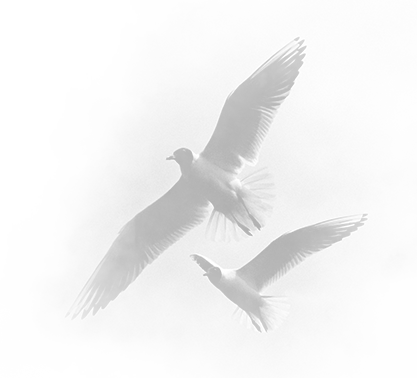

#848 A Fatal Objection to the Fine-Tuning Argument?
August 13, 2023Hi Dr Craig!
I have a question on a (in my opinion) fatal objection to the Fine-Tuning Argument, especially because before this, I used the argument with my Non-Christian Friends due to it's scientific evidence. The objection comes from attempting to calculate the probability (or chance) of Fine- Tuning given naturalism. Much of the time when a fine-tuning case is discusssed, the smallness of the life-permitting range is discussed. On the surface, these intervals such as the Gravitational force constant seem on intuition to be surprising, but on closer inspection, shouldn't the real question be not the smallness of the intervals, but the smallness of the intervals in comparison to all possible universes. As the Mcgrew's (along with Vestrup) has identified, if the comparison range is infinite, it makes it impossible to calculate a likelihood probability. The question is, Do we have a comparison range of possible universes? If so, what is this comparison range and how is it determined. I've attempted to find an answer among the work of Collins and Barnes but I am not particularly knowledgable in advanced physics or Philosophy.
Thanks for all your work
Caleb
Australia

Dr. craig’s response
A
The so-called normalizability objection holds that because the probability measure is spread over an infinitely large range of assumable values of the constants and quantities, the relevant probabilities of the constants and quantities cannot be calculated. You shouldn’t be too hasty to pronounce an objection “fatal,” Caleb, before you’ve even read the other side! In fact, both Robin Collins and Luke Barnes do respond to the normalizability objection at some length. Perhaps the best, accessible discussion is Jason Waller, Cosmological Fine-Tuning Arguments: What (If Anything) Should We Infer from the Fine Tuning of Our Universe for Life, Routledge Studies in the Philosophy of Religion (New York: Routledge, 2020), pp. 87-100. Waller distinguishes between pragmatic and mathematical solutions to the objection. Barnes and Collins defend pragmatic solutions, while Alexander Pruss offers a mathematical solution. It’s important to appreciate that these solutions are not at all mutually exclusive. For example, Collins, while adopting a pragmatic solution, also is happy to give up, in agreement with Pruss, countable additivity for infinite collections and so have a mathematical solution.
Observing that normalizability problems are common in science, Barnes solves the problem by denying the assumptions on which the objection is predicated: “the two conditions for the normalisability problem—infinite range, flat distribution—are not forced on us for the fundamental constants of nature” and so may be rejected.[i] There is no reason to think that the range of assumable values is actually infinite. Barnes thinks that restrictions in the range arise naturally from the standard models of particle physics and cosmology themselves.
Collins proposes that that range of assumable values is the set of values for which we are able to determine scientifically whether the values are life-permitting or not, what he calls the epistemically illuminated (EI) range. So doing is equivalent to taking the EI range as our comparison range. Collins justifies taking the EI range as our comparison range by appeal to scientific practice:
Thinking in terms of reference classes, the justification for restricting our reference class to the EI region is similar to that used in science: when testing a hypothesis, we always restrict our reference classes to those for which we can make the observations and calculations of the frequencies or proportions of interest – what in statistics is called the sample class. This is legitimate as long as we have no reason to think that such a restriction produces a relevantly biased reference class. Tests of the long-term efficacy of certain vitamins, for instance, are often restricted to a reference class of randomly selected doctors and nurses in certain participating hospitals, since these are the only individuals that one can reliably trace for extended periods of time. The assumption of such tests is that we have no reason to think that the doctors and nurses are relevantly different than people who are neither doctors nor nurses, and thus that the reference class is not biased. . . . The same sort of justification underlies restricting the class to the EI range.[ii]
That gives us a finite comparison range, thereby avoiding the problem.
But suppose we take the comparison range to be infinite instead. This turns the argument from fine-tuning into an argument from coarse-tuning, since the ratio of any finite range of life-permitting values to the comparison range will be zero. But, Collins insists, we would still appeal to the evidence of physics to show that the life-permitting range is finite, and the formal presentation of the argument, based on the claim that the ratio of the life-permitting range to the comparison range is vanishingly small, would remain. Rejecting the coarse-tuning argument because it would have the same force no matter how un-fine-tuned a constant is, Collins rightly points out, is counterintuitive. For suppose that the fine-tuning argument would have probative force if the comparison range were finite. Now imagine increasing the width of this comparison range while keeping it finite. Clearly, the more the comparison range increases, the stronger the fine-tuning argument gets. Accordingly, if we deny that the coarse-tuning argument has probative force because the comparison range is purportedly infinite, we must draw the counterintuitive conclusion that although the fine-tuning argument gets stronger and stronger as the comparison range grows, magically when it becomes actually infinite, the argument loses all probative force. This is, to my mind just one more example of the sharply counter-intuitive consequences of the assumption of the existence of an actual infinite. Be that as it may, Collins thinks that the reason we are impressed with the smallness of the life-permitting range is that we actually do have some vague finite comparison range to which we are comparing it, namely, the EI range.
John Leslie gives the engaging illustration of a fly resting on a large, blank area of the wall.[iii] A single shot is fired, and the bullet strikes the fly. Now even if the rest of the wall outside the blank area is covered with flies, such that a randomly fired bullet would probably hit one, nevertheless it remains highly improbable that a single, randomly fired bullet would strike the solitary fly within the large, blank area. Leslie’s analogy justifies restricting our attention only to Collins’ EI range among worlds governed by the same laws of nature. Even if there should be in the unilluminated range life-permitting combinations of values, these are not relevant to the argument if the life-permitting range is small relative to the range of values of which we do have knowledge as to their permitting life. And if the wall is infinite, then no matter how large the blank, finite area is, the single bullet’s striking the fly cries out for explanation.
[i] Luke A. Barnes, “A Reasonable Little Question: A Formulation of the Fine-Tuning Argument,” Ergo 6/42 (2019-20), pp. 1236-39, doi.org/10.3998/ergo.12405314.0006.042), pp. 1245-46; cf. Luke A. Barnes, “Fine-Tuning in the Context of Bayesian Theory Testing,” European Journal for Philosophy of Science 8/2 (2018): 253–269.
[ii] Robin Collins, “The Teleological Argument: An Exploration of the Fine-Tuning of the Universe,” in The Blackwell Companion to Natural Theology, ed. Wm. L. Craig and J. P. Moreland (Oxford: Blackwell, 2009), pp. 245-46.
[iii] John Leslie, Universes (London: Routledge, 1989), p. 17. He explains,
“If a tiny group of flies is surrounded by a largish fly-free wall area then whether a bullet hits a fly in the group will be very sensitive to the direction in which the firer’s rifle points, even if other very different areas of the wall are thick with flies. So it is sufficient to consider a local area of possible universes, e.g., those produced by slight changes in gravity’s strength. . . . It certainly needn’t be claimed that Life and Intelligence could exist only if certain force strengths, particle masses, etc. fell within certain narrow ranges. . . . All that need be claimed is that a lifeless universe would have resulted from fairly minor changes in the forces etc. with which we are familiar” (pp. 138–9.)
- William Lane Craig

